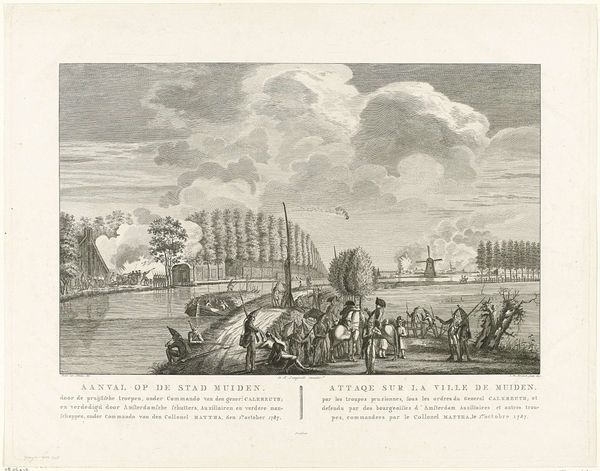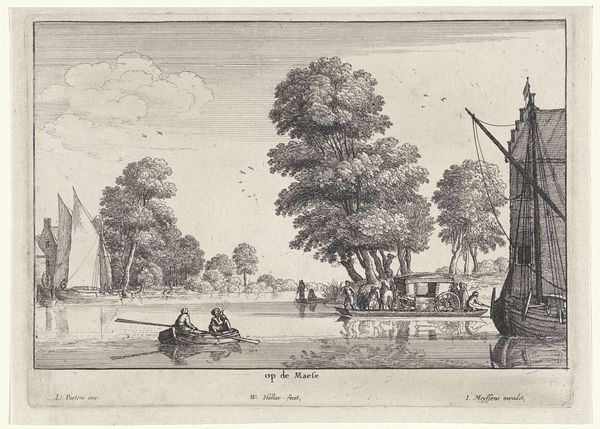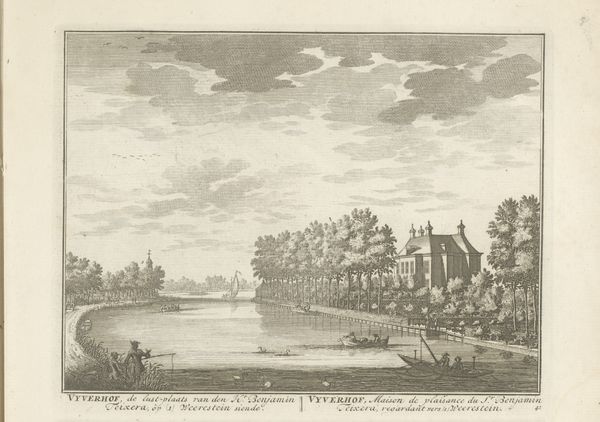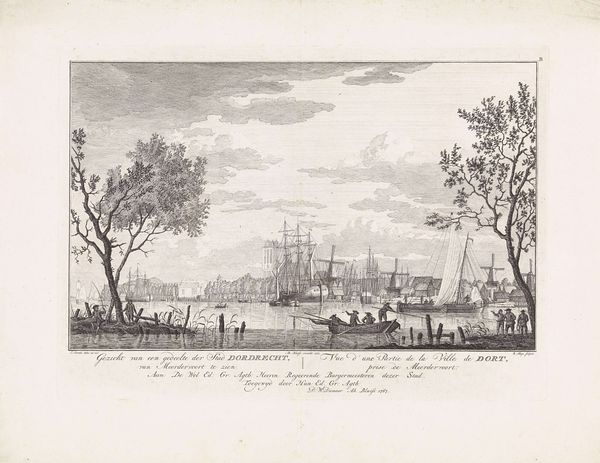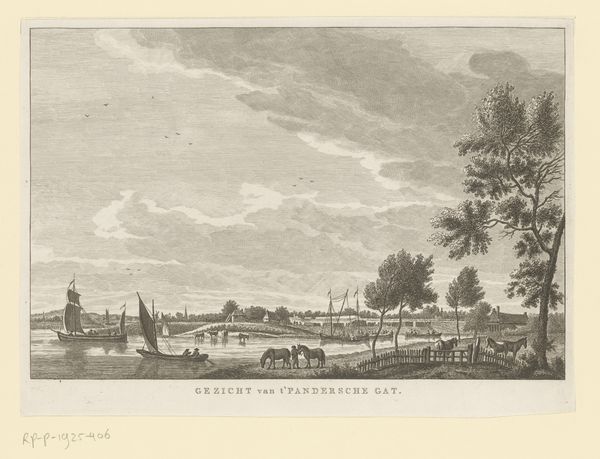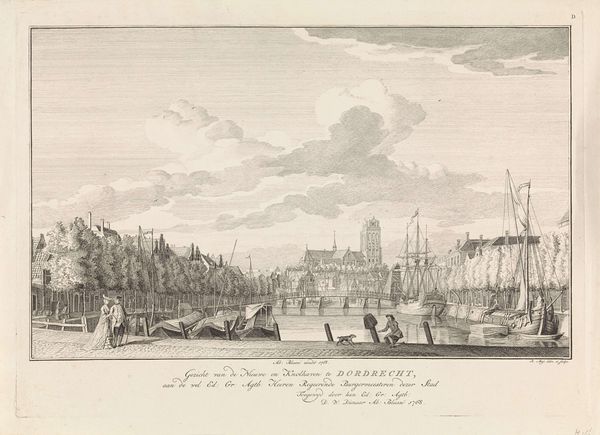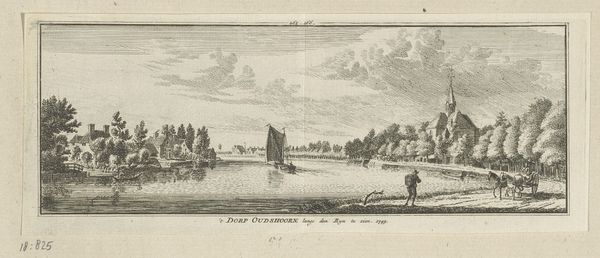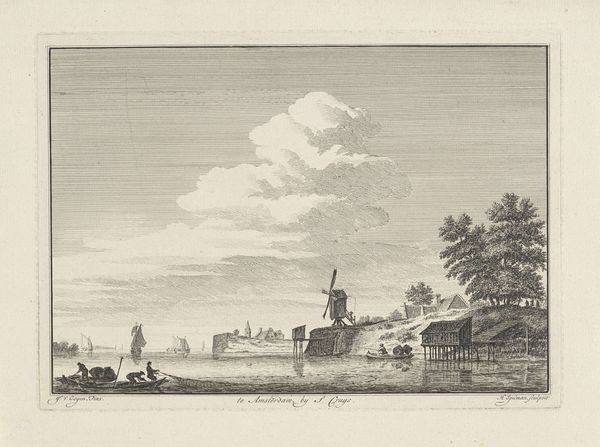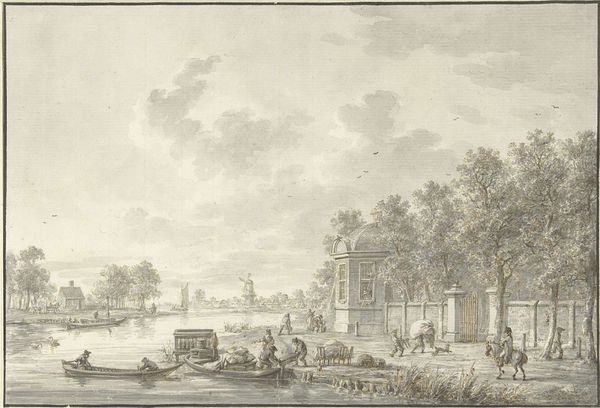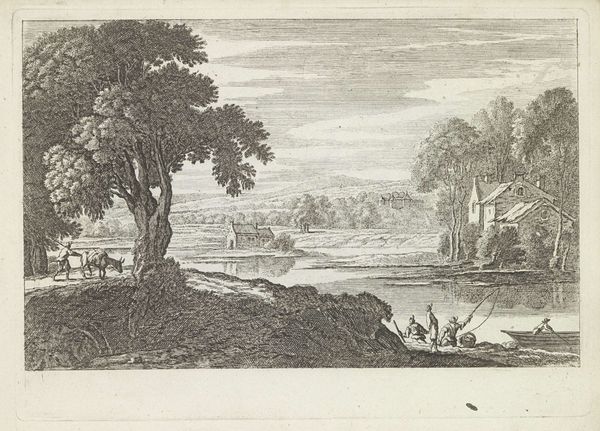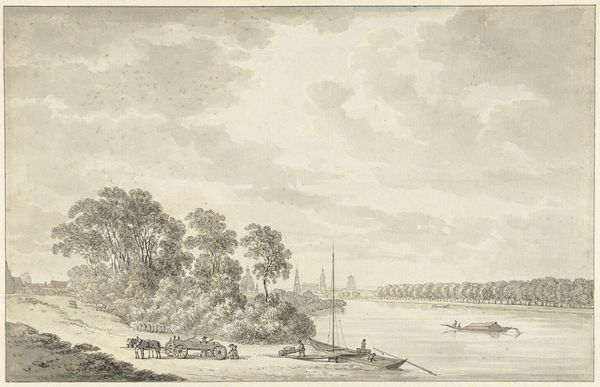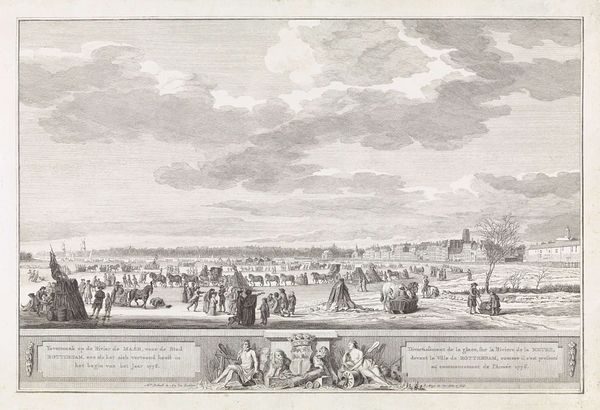
Dimensions: height 311 mm, width 461 mm
Copyright: Rijks Museum: Open Domain
Curator: I find this image quite serene, despite depicting an attack. The hazy atmosphere, the reflections in the water... it’s beautifully composed. Editor: Indeed. Let's delve into "Aanval op Muiden door generaal Kalckreuth, 1787," a print made between 1790 and 1792 after a drawing by Maas van Altena. What's immediately striking to me is how this work translates a specific socio-political event – a military action – into a commodity, a reproducible object intended for wider consumption and perhaps even celebration of power structures. Curator: A celebration, yes, but crafted with traditional materials and artisanal labor, let's remember the engraver shaping the metal plate, the paper itself, the printing process requiring specialized skill and equipment. It’s an early form of mass media. Editor: Exactly! The "means of production" were transforming, impacting how conflict and authority were represented, consumed and understood by broader society. Consider the perspective: elevated, seemingly detached, granting the viewer an almost godlike vantage over the scene. Who benefits from this visual narrative? Curator: Likely those with the resources to acquire it, cementing their own version of events, not the laborers directly impacted. But beyond ideology, look at the details in clothing, weapons, architecture; precise and informative for the time. The cloud effects created via etching are masterful too. Editor: And this accuracy reinforces the impression of veracity, creating a visual record to bolster a certain historical account. Consider also the subtle ways the "landscape" aesthetic is deployed. Are the puffs of smoke romanticized as elements that are painterly? What is obscured and what is emphasized? It speaks volumes about the justification and naturalizing of these aggressions. Curator: That point about romanticism is worth emphasis. Does depicting conflict using this level of landscape aesthetic remove from it an emotional reaction that would prevent further support for the attack by Kalckreuth. Editor: Precisely, who would support the attack unless they were able to be provided with such a romanticised vision of war. These depictions and materials allow for power to not be considered on its own in such plain terms. This also speaks to the broader conversation around identity and marginalization that takes root within this type of Baroque aesthetic. Curator: A fascinating connection. On a purely aesthetic level, I admire the skillful translation from a possibly looser sketch to such a refined finished print and that tension itself reflects power. Editor: Agreed, and remembering that context changes everything. It’s that dance between craft, historical understanding, and power that always informs these materials in society. Curator: A compelling image, seen through distinct, yet complimentary lenses. Thanks.
Comments
No comments
Be the first to comment and join the conversation on the ultimate creative platform.
